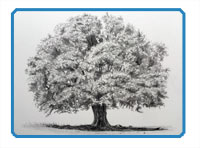
By Matt Fussell
In this lesson, we'll explore a structured approach to drawing a realistic tree. The approach that I'll share with you can be applied to any species of tree and can even be adapted to drawing bushes and shrubbery. In this approach, we'll examine specific aspects of the tree and apply what is observed to the drawing.

You're likely to find the most success drawing a tree from observation, but you can also apply this method to drawing a tree from your imagination. A detailed breakdown of this approach and a look at the materials can be found further down this page, after the video. Let's get to it...
In this example, we'll draw the tree using graphite pencils. Three pencils are used, but the pencils that you may use are dependent on the pressure that you typically place on the pencil. Ultimately, you'll need to create a full range of value in the drawing. For this reason, a range of graphite grades are used.
Since texture will play an important role in the drawing, the surface that you choose to work on is important. For this example, Bristol paper
(vellum surface) is used. This paper is very smooth, but still has an ample tooth (texture) to accept multiple applications of graphite.
Bristol paper provides a good amount of control over the mark, but the texture in the drawing must be developed through mark-making and value alone. (Detail of texture created on Bristol paper is pictured below left.)
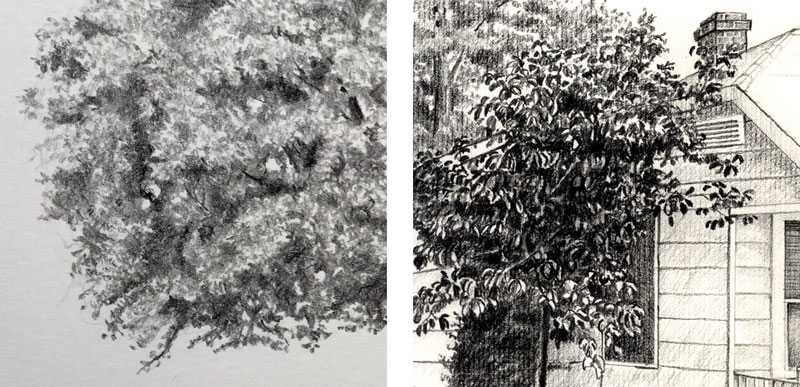
Some will prefer a paper with a greater texture. Working on a surface with a bit more tooth can aid in the development of the texture of the leaves. Charcoal paper
is a good solution for those wanting to exploit the surface texture. (Detail of texture created on charcoal paper is pictured above right.)
It's easy to become overwhelmed when you look at a tree. There are so many details! But to draw one accurately, we do not need to be consumed with these details. Instead, we'll breakdown the tree into three simple aspects. We'll develop each aspect individually, following a structured approach.
1. Find the Shape(s) - The first thing we'll do is define the overall shape of the tree. Drawing lightly with the 2H pencil, we'll concentrate only on the outer contours.
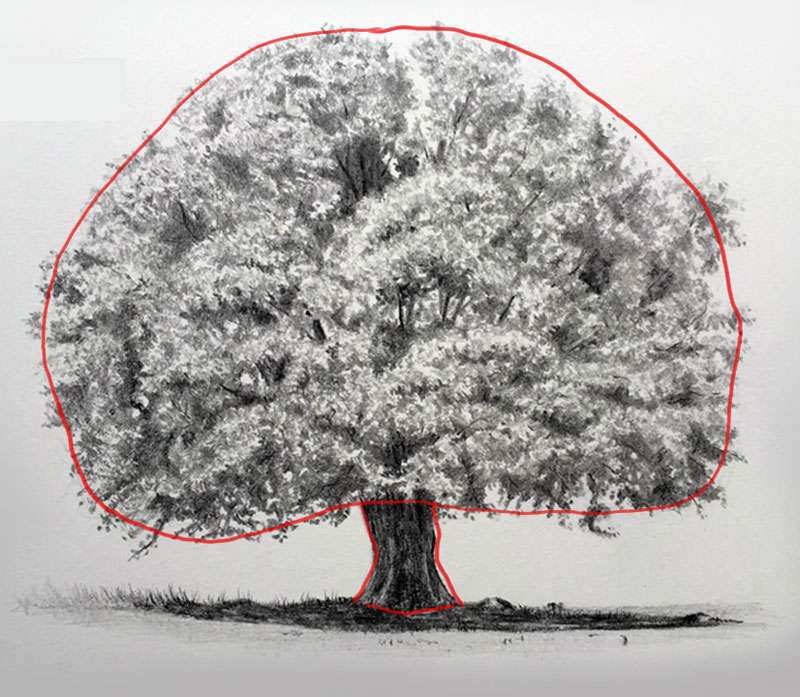
With the outer contours defined, we'll next find the smaller shapes within the canopy of the tree. These locations are "clumps" or collections of leaves found at the end of the branches.
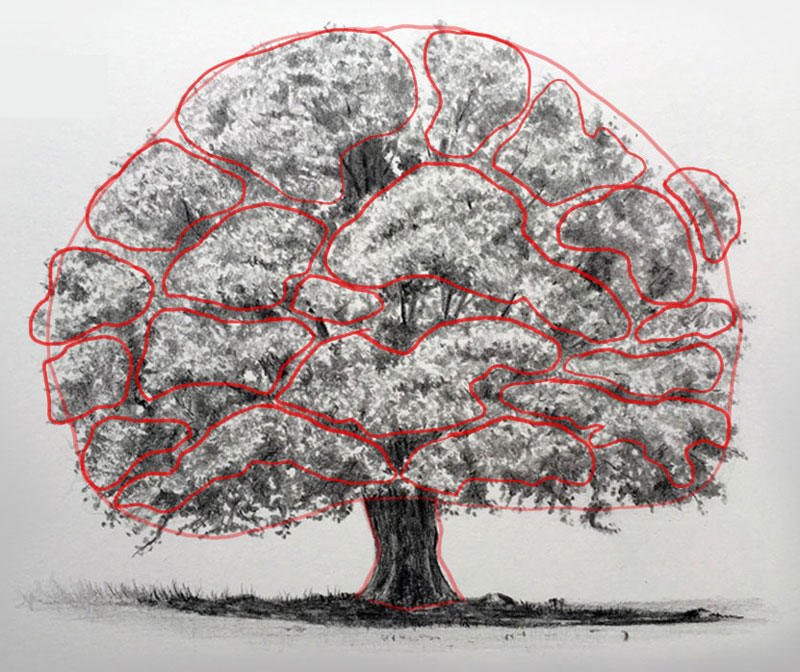
2. Develop the Texture - Using the defined shapes as a guide, we'll start to develop the texture of the leaves. This is a patient process. Take your time and remain consistent. It is not necessary to draw every leaf, instead we'll create the illusion of collections of leaves. We'll think about each "clump" or collection of leaves as a form, developing the highlights and shadows on each.
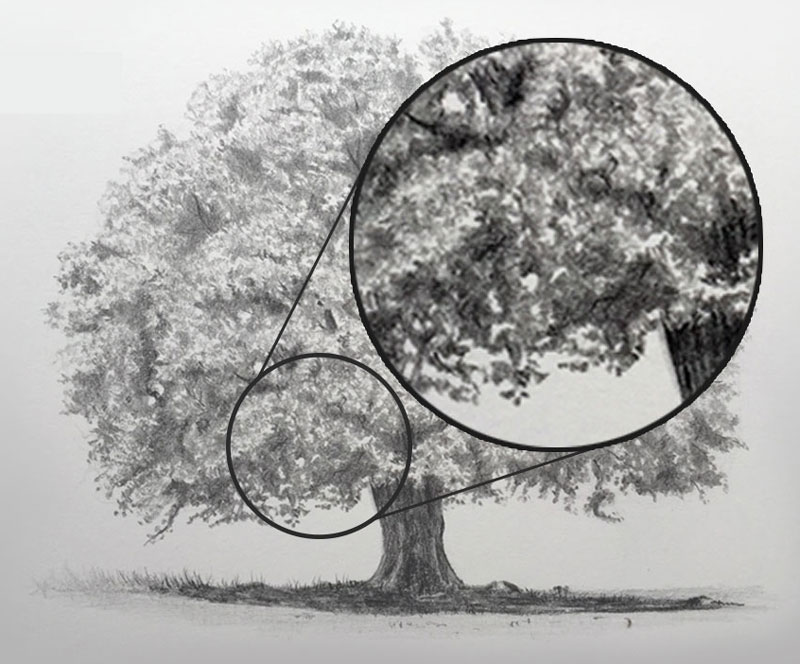
Organic collections of lines can be used to create the illusion of the texture. These lines may be small squiggles that overlap. Be sure to leave an organic and irregular edge around the outer contours of the tree and leave small open spaces within the canopy.
3. Develop the Value - The illusion of texture is created not only by the marks that are made, but also through the development of the values. Value is the darkness or lightness of a color. It is responsible for communicating not only the light within the scene, but also the form and texture of the object. Our goal is to create a full range of value, including the darkest "darks" and the lightest "lights".
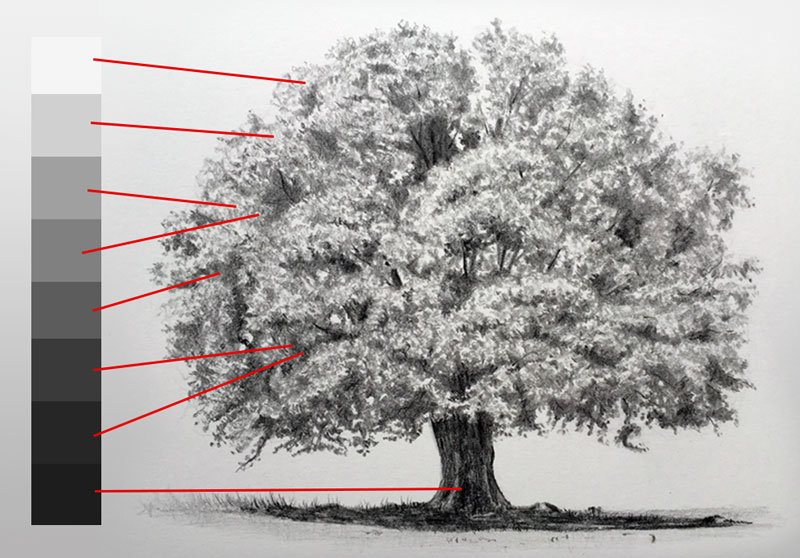
1. Take Your Time - As mentioned before, drawing a realistic tree requires patience and persistence. This is really true for any subject that you draw. Far too many people believe that drawing should be quick and easy. Sometimes just "slowing down" and patiently developing the drawing leads to considerable improvement.
2. You Are Creating an Illusion - Drawing is an act of illusion. It is the development of the shapes, textures, and value that create this illusion. There's no need to draw everything that you see. Instead, concentrate on how you can create the illusion of what you see.
3. Deviations are Acceptable - When drawing from observation, deviations from the original reference or subject are inevitable. Creating an exact copy of your subject probably shouldn't be your goal. Don't put unnecessary pressure on yourself to be "perfect". This will just lead to frustration.